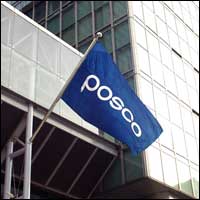June 22, 2005 is a red-letter day in Indian history when South Korean Steel major, POSCO announced its intention to invest USD 12 billion in Odisha. It was the largest FDI ever committed by any investor in India. POSCO entered into a Memorandum of Understanding (MoU) with Odisha government to set up an integrated steel plant and captive port, and develop iron ore mines. Ku-Taek Lee, Chairman and CEO, POSCO, while signing the MoU in 2005, had said “I am confident POSCO’s Indian investment will shed positive light on India for other global investors, attracting more mega projects to the nation”. But the fact is that after eight years, FDI inflows to India are drying up and many mega investment plans like Arcelor Mittal have shelved their plans to set up mega projects. Even POSCO has dropped its plans to set up 6 MTPA steel project in Karnataka.
One need not go too far to find out reasons for change in perception about investing in India. Between 2006 and 2012 China added 440 million tones of steel making capacity while POSCO in India was busy fighting NGOs, making representations before committees after committees and revising its investment plans. POSCO may derive some consolation from the fact that, Tata Steel, which had signed MoU with Odisha government in 2004 for 6 MTPA integrated steel plant involving an investment of Rs 40,000 crore is expected to complete its first phase of 3 MTPA plant only by next year, that is, after 11 years of signing MoU. So, things move very slowly in India and more so in Odisha. POSCO India can very well claim it is just a victim of turtle culture prevailing in this part of the world.
The main problem POSCO faced during last eight years is mainly relating to land acquisition. Even now it is not clear whether the company has completed the entire land acquisition process. In June the Odisha state government declared that it had acquired 2,700 acres of land which is needed for the first phase of the project in which POSCO would set up 8 MTPA steel plant. As per the original plan the entire project needed 4,004 acres of land. In other words, another 1304 acres of land yet to be acquired which is likely to be done at a future date. More interestingly, nearly one third of this land needs to acquired from the private parties. So, more protests may erupt in the coming years if the company goes ahead with its second phase. Also additional land will have to be acquired in accordance with the new Land Acquisition Act passed by the Parliament recently which entails a very tedious and time consuming process.
Even after acquiring minimum land required for the project and passing the environment clearance hurdle, protests against this project go on unabated. For example, Greenpeace India has demanded the resignation of Environment Minister, Veerappa Moily for speedy clearance of the file without getting any forest clearance. Senior BJP leader and former MP Jual Oram has threatened to launch agitation if there was any bid to start mining at Khandadhar area. According to him Khandadhar is a unique water fall and famous religious spot. He has already declared that mining won’t be allowed in that area. Thus, for POSCO it seems end of one problem is just the beginning of another trouble. South Korean steel maker’s project execution ability is being tested to its extreme in the sub-continent.











